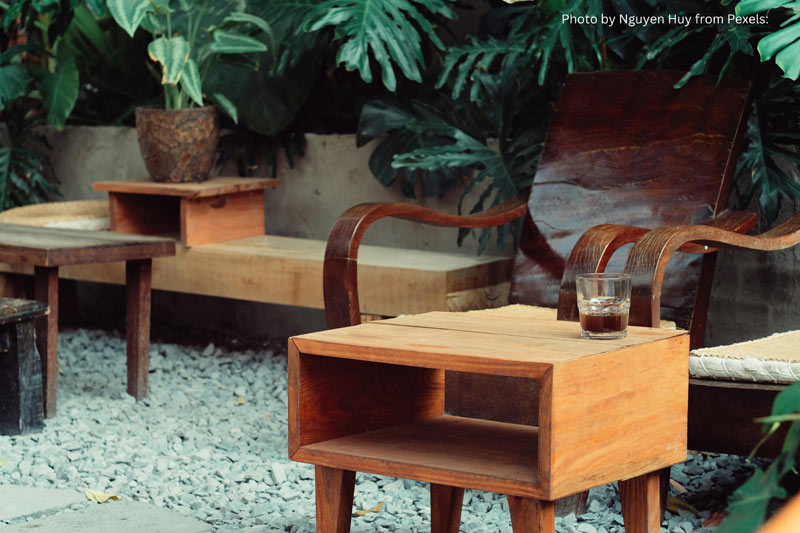What is Cocobolo Wood Used for?
20th Jun 2024

Cocobolo wood is highly valued, primarily due to its unique appearance. It is a tropical hardwood native to Central America, grown in Nicaragua, Costa Rica, Panama, and parts of Mexico. Cocobolo is dense and durable, and it is rot—and insect-resistant. Despite these properties, cocobolo is still a very valuable wood, as the tree grows very slowly and can take decades to reach maturity. On the international wood market, cocobolo is in short supply, making it rare and exceedingly valuable.
Several characteristics of cocobolo wood make it ideal for many uses. These include:
- Strength: Cocobolo wood is known to be one of the hardest and densest woods, which means it is very durable and strong. It also contains natural oils, which make it insect, water, rot, and weather-resistant, which also contributes to its durability.
- Grain: Cocobolo wood is marked by its fine, straight to irregular grain, which also includes dark streaking.
- Finish: Cocobolo wood polishes well with a high gloss, which is why we see it used for many decorative purposes.
- Color: One of the key things that make cocobolo wood so prized is its coloring. It is vibrant, with hues ranging from yellow, orange, and red to shades of purple and brown. Very few other woods are found with this much range in their coloring.
Because cocobolo wood has such rich coloring and beautiful grains, it is prized for its use in decorative pieces and high-end uses. Common uses for cocobolo wood include:
- Fine furniture: Cocobolo’s distinct patterns and colors make it ideal for crafting luxurious furniture pieces, such as tables, chairs, and desks; it has a striking appearance, and its durability often means that the furniture will last for decades.
- Fine art and sculptures: Cocobolo is easy to work with, and its fine texture makes it suitable for detailed carvings and sculptures. Due to the range of coloring and grains, it is assured that no two art pieces made from cocobolo will look alike. Rather, each piece is distinct and unique.
- Musical instruments: Many musical instruments are works of art, and this is especially true of those crafted from cocobolo wood, which is also known for its tonal qualities. It is commonly used for making guitar backs, sides, and fretboards. Additionally, its density and ability to produce a clear, resonant sound make it a great material for crafting woodwind instruments, such as clarinets and oboes.
- Yachts and boat building: While the cost of cocobolo wood makes it impractical to use for entire boats, this wood is often used in the interior of luxury yachts for decorative trim and detailing. It's an ideal option due to its water resistance and aesthetic appeal.
- Knife and tool handles: Cocobolo wood is frequently chosen for custom tool and knife handles because of its density, smooth finish, and moisture resistance.
- Gun grips: This wood is also used in pistol grips because of its strength, beauty, and resistance to wear and tear.
- Pool cues: Cocobolo is an ideal choice for high-quality pool cue butts due to its density and beauty.
- Artistic projects and decorative items: Cocobolo is often used in crafting artisanal pieces and craft projects, such as intricate boxes and containers. Due to its unique appearance and durability, it is commonly used for crafting chess boards and pieces. Additionally, it’s frequently used in crafting turned objects, such as bowls, vases, and other decorative pieces, and it can be used for intricate inlays in various projects. It is ideal for these purposes due to its contrasting colors and unique grain patterns.
- Luxury accessories: As cocobolo is prized for its beautiful and unique patterns, it is no surprise that it is commonly used to create luxury accessories, such as high-end writing instruments and jewelry that are valued for their exotic look.
- Flooring: Cocobolo is much harder and more durable than most other woods, which makes it an excellent option for high-end flooring as it is less prone to dents and scratches.
As you can see, cocobolo wood has many uses. While it can be hard to work with due to its density, the finished product often makes it worth the effort. Unfortunately, over-harvesting in the past combined with its slow growth means that this wood is relatively rare. It can be much more expensive than other woods, which is why we see it used primarily for luxury items.
Cocobolo is one of the most beautiful and highly valued types of lumber. It is in high demand with many woodworkers and artists. Its distinct and rich color scheme can lead to beautiful products. For more information about cocobolo wood, contact Global Wood Source today!

